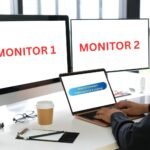The Department of Government Efficiency recently looked into how federal agencies spend money on software. What they found was pretty shocking. At the Housing and Urban Development department alone, taxpayers were paying for over 11,000 Adobe software licenses that nobody was actually using.
Think about that for a second. That’s like paying for 11,000 gym memberships when nobody in your office goes to the gym. The government was literally throwing money away on software that just sat there collecting digital dust.
How Did This Happen?
You might wonder how something this wasteful could happen in the first place. The answer is actually pretty simple. Government agencies often buy software licenses in bulk without keeping track of who actually needs them. Someone in the IT department probably thought they needed thousands of Adobe licenses for their workers. But then people quit, moved to different jobs, or just never used the software at all.
Nobody was checking to see if the licenses were being used. There was no system to track whether someone who got a license was actually opening the software. So year after year, the government kept paying subscription fees for software that nobody touched.
The Real Cost of Poor Planning
When we talk about 11,020 unused Adobe licenses, we’re not talking about a small change. Each Adobe license costs hundreds of dollars per year. Even if each license only costs $200 annually, that’s over $2 million in wasted taxpayer money every single year. And that’s just at one government agency.
This kind of waste adds up fast when you think about all the different software programs the government buys. Microsoft Office, security software, design tools, and database programs. If agencies aren’t tracking usage properly, millions of dollars are probably going down the drain across the entire federal government.
Why This Matters to Regular People
You might think this doesn’t affect you directly, but it really does. Every dollar the government wastes on unused software is a dollar that could have been spent on roads, schools, or healthcare. It’s also a dollar that came from your taxes in the first place.
When government agencies waste money like this, it makes people lose trust in how their tax dollars are being spent. People work hard for their money, and they expect the government to be careful with it. Finding out that agencies are paying for thousands of unused software licenses doesn’t exactly inspire confidence.
The Bigger Picture Problem
The Adobe license situation at HUD is probably just the tip of the iceberg. Most government agencies probably have similar problems with software waste. They buy too many licenses, don’t track who uses what, and end up paying for stuff nobody needs.
This happens because government purchasing often works differently from private companies. In a private business, if you waste money on unused software, it comes directly out of profits. Managers have strong incentives to keep costs down. But in government, there’s less direct pressure to eliminate waste, especially when it’s hidden in IT budgets that most people don’t understand.
Simple Solutions That Could Save Millions
The good news is that fixing this problem isn’t rocket science. Government agencies could save huge amounts of money with some basic steps. They could start by actually counting how many people use each software program. They could set up systems to automatically remove licenses when employees leave.
And they could also negotiate contracts that let them add or remove licenses as needed instead of buying thousands upfront.
Some agencies are already starting to do this kind of tracking. They use software that monitors which programs people actually open and use. If someone hasn’t used their Adobe license in six months, the system flags it for review. This kind of monitoring could easily prevent the waste that DOGE found at HUD.
What Happens Next
The DOGE audit was designed to find exactly these kinds of problems so the government can fix them. Now that they’ve identified the unused licenses, HUD will probably cancel most of them and save taxpayers millions of dollars going forward.
But the real test will be whether other agencies learn from this example. Will they audit their own software spending? Will they put systems in place to prevent similar waste? Or will they just hope nobody looks too closely at their IT budgets?
The Department of Government Efficiency plans to keep digging into government spending to find more examples of waste. Software licenses are probably just one area where they’ll find problems. The goal is to make the federal government run more like a well-managed business that actually cares about not wasting money.
For taxpayers, this audit shows both the bad news and the good news. The bad news is that their money has been wasted on a massive scale. The good news is that someone is finally paying attention and working to fix these problems. Every unused license that gets canceled is money that can go toward something more useful than software that nobody opens.



